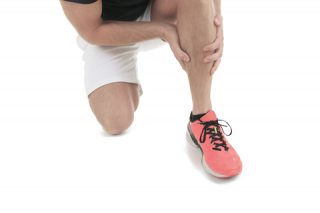Written by Michelle Champlin BSc Pod., M.Ch.S., S.R., Ch., (UK)
‘Flat feet’ in children can result in arch, ankle, knee, leg or back pain. The excessive pronation affects the balance of the lower leg and places abnormal stress on the body, including too much stress through the inside of the foot and ankle. Studies have shown that a permanent increase in arch height can occur with the use of properly prescribed and managed custom orthotics. It is important that your child is treated by a registered Podiatrist with specific training and expertise in children’s feet and biomechanics, advises Chief Podiatrist Michelle Champlin.
At Dubai Podiatry Centre, there has been significant structural improvement to the arch clinically in the vast majority of child patients who wear custom orthotics prior to muskulo-skeletal maturity. Chief Podiatrist Michelle Champlin advises that treatment is most effective when started early, at age 5/6 years old, which makes routine foot checks when they are of school age vital. Flat feet have a strong genetic factor, so mum or dad will tend to exhibit flat feet too.
The latest advances in custom orthotics have changed the way we manage this problem in children – the days of bulky, obvious orthotics, ‘special shoes’ or full leg braces are gone for flat feet. It is important that a full foot assessment is carried out by a Podiatrist. At Dubai Podiatry Centre, the Podiatrist then makes the child’s orthotics entirely from scratch from a mold of the child’s feet and then fits them inside their school or sports shoes. The clinic’s in-house orthotics lab is a rare feature for any clinic to have, as most clinics send out for generic insoles to be modified from a factory elsewhere, usually abroad. It is imperative, in our opinion, that orthotic therapy follows a precise treatment plan and we carefully monitor progress, adjusting the orthotic at 6-12 weeks to progressively lift and tone the arch until treatment is finished. Incorrect orthotic therapy in children’s forming feet can result in serious complications and/or injury.
In the past, surgical reconstruction of flat feet was fairlyu common, particularly when pain was present. This may have included subtalar joint implants and rearfoot fusions to help reconstruct the shape of the foot. Nowadays, custom orthotics are the preferred treatment, as surgery, no matter the age of a patient, is generally a final option once more conservative treatments have failed. Surgery would not be advised or performed until skeletal maturity (adulthood) has been reached and is very rare as a treatment for flat feet due to the advances in orthotic therapy.
Treating flat feet in children is important, especially to avoid issues such as hip or back pain in later life. Read our guide to signs of foot problems in children to help decide if your child has a foot problem and needs to see a Podiatrist.
For any childhood foot concerns, contact the experts at Dubai Podiatry Centre on +971 4 3435390 for a friendly child foot check and expert advice/treatment.
بقلم ميشيل شامبلين
يمكن أن تؤدي “الأقدام المسطحة” عند الأطفال إلى آلام في القوس أو الكاحل أو الركبة أو الساق أو الظهر. يؤثر الكبح المفرط على توازن الجزء السفلي من الساق ويسبب ضغطًا غير طبيعي على الجسم، بما في ذلك الضغط الزائد على الجزء الداخلي من القدم والكاحل. أظهرت الدراسات أن الزيادة الدائمة في ارتفاع القوس يمكن أن تحدث مع استخدام أجهزة تقويم العظام المخصصة الموصوفة والمدارة بشكل صحيح. من المهم أن يتم علاج طفلك من قبل طبيب أقدام مسجل يتمتع بتدريب خاص وخبرة في أقدام الأطفال والميكانيكا الحيوية، كما تنصح رئيسة أطباء الأقدام ميشيل شامبلين.
في مركز دبي لطب الأرجل، حدث تحسن هيكلي كبير في قوس القدم سريريًا لدى الغالبية العظمى من المرضى الأطفال الذين يرتدون أجهزة تقويم العظام المخصصة قبل نضوج العضلات والهيكل العظمي. تنصح رئيسة أطباء الأقدام ميشيل شامبلين بأن العلاج يكون أكثر فعالية عندما يبدأ مبكرًا، في سن 5/6 سنوات، مما يجعل إجراء فحوصات روتينية للقدمين عندما يكونون في سن المدرسة أمرًا حيويًا. تمتلك الأقدام المسطحة عاملًا وراثيًا قويًا، لذلك تميل الأم أو الأب إلى ظهور الأقدام المسطحة أيضًا.
لقد غيرت أحدث التطورات في أجهزة تقويم العظام المخصصة الطريقة التي نتعامل بها مع هذه المشكلة عند الأطفال – لقد ولت أيام أجهزة تقويم العظام الضخمة والواضحة أو “الأحذية الخاصة” أو دعامات الساق الكاملة للأقدام المسطحة. من المهم أن يتم إجراء تقييم كامل للقدم من قبل طبيب الأقدام. في مركز دبي لطب الأرجل، يقوم طبيب الأرجل بعد ذلك بتصنيع أجهزة تقويم العظام الخاصة بالطفل بالكامل من الصفر من قالب قدم الطفل ثم يقوم بتثبيتها داخل حذائه المدرسي أو الرياضي. يعد مختبر تقويم العظام داخل العيادة ميزة نادرة في أي عيادة، حيث ترسل معظم العيادات نعالًا داخلية عامة لتعديلها من مصنع في مكان آخر، عادةً في الخارج. من الضروري، في رأينا، أن يتبع العلاج التقويمي خطة علاجية دقيقة ونراقب التقدم بعناية، ونضبط الجهاز التقويمي بعد 6-12 أسبوعًا لرفع القوس وتنعيمه تدريجيًا حتى انتهاء العلاج. يمكن أن يؤدي العلاج التقويمي غير الصحيح في أقدام الأطفال إلى مضاعفات و/أو إصابات خطيرة.
في الماضي، كانت إعادة البناء الجراحي للقدم المسطحة أمرًا شائعًا إلى حد ما، خاصة عند وجود الألم. ربما شمل ذلك عمليات زرع المفصل تحت الكاحل ودمج القدم الخلفية للمساعدة في إعادة بناء شكل القدم. في الوقت الحاضر، تعتبر أجهزة تقويم العظام المخصصة هي العلاج المفضل، حيث أن الجراحة، بغض النظر عن عمر المريض، تكون عمومًا خيارًا نهائيًا بمجرد فشل العلاجات المحافظة. لا ينصح بإجراء عملية جراحية أو إجراؤها حتى يتم الوصول إلى مرحلة النضج الهيكلي (البلوغ) وهي نادرة جدًا كعلاج للأقدام المسطحة بسبب التقدم في العلاج التقويمي.
يعد علاج القدم المسطحة عند الأطفال أمرًا مهمًا، خاصة لتجنب مشاكل مثل آلام الورك أو الظهر في وقت لاحق من الحياة. اقرأ دليلنا لعلامات مشاكل القدم عند الأطفال للمساعدة في تحديد ما إذا كان طفلك يعاني من مشكلة في القدم ويحتاج إلى رؤية طبيب الأقدام.
إذا كانت لديك أي مخاوف تتعلق بقدم الأطفال، اتصل بالخبراء في مركز دبي للعناية بالاقدام على الرقم 043435390 لإجراء فحص لطيف لقدم الأطفال والحصول على مشورة/علاج الخبراء.




